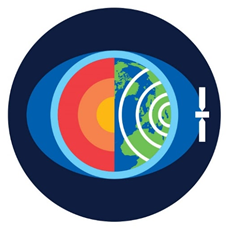Welcome to the COMET-LiCS Land Subsidence Portal.
The Land Subsidence Portal presents 99 subsiding regions in Iran with InSAR time-series data calculated by the automatic Looking Into Continents from Space with Synthetic Aperture Radar (Lazecký et al., 2020, LiCSAR) processing tools.
Land Subsidence Portal radar data was acquired by the European Space Agency’s (ESA) Sentinel-1 satellite constellation from 2015 to present. Data has a repeat time of 6-12 days and is freely available for download.
Traditionally, land subsidence is measured using GPS and leveling data (Chaussard et al., 2013). Despite these methods providing precise subsidence measurements, they are time consuming and only sample data at a few locations. Alternatively, Interferometric Synthetic Aperture Radar (InSAR) can map land subsidence rates and patterns over extensive areas with high precision and short repeat-time.
InSAR uses the change in phase between radar images acquired on different days to measure small displacements on the Earth’s surface. We can map these changes to produce an interferogram. Over longer periods of time, long-term surface displacements and rates of subsidence can be calculated using InSAR time-series analysis.
Initially, this portal catalogues subsidence in Iran. Across the country, both local and regional scale land-surface deformation has resulted from the decline in groundwater levels (Motagh et al., 2008; Khorrami et al., 2020; Goorabi et al., 2020; Javad Mirzadeh et al., 2021). Moreover, the gap between groundwater use and renewal is so large that land subsidence is likely to be irreversible in the near future (Olen, 2021). Quantifying the extents and rates of deformation related to groundwater extraction using data from this portal could therefore inform groundwater management approaches.
Previous studies of groundwater related deformation in Iran using InSAR data already analyse some subsiding regions catalogued in this portal (e.g. Deghani et al., 2013; Amighpey & Arabi, 2016; Foroughnia et al., 2019; Babaee et al., 2020; Khoshlahjeh et al., 2021).
This site is in continual development with data and information updated regularly.
به پورتال فرونشست زمین COMET-LiCS خوش آمدید.
پورتال فرونشست زمین 99 منطقه فرونشست در ایران را با داده های سری زمانی InSAR که توسط ابزار پردازش خودکار لیکسار (Lazecký et al., 2020, LiCSAR) تولید شده است، ارائه می دهد.
داده های راداری پورتال فرونشست زمین توسط سنجنده Sentinel-1 آژانس فضایی اروپا (ESA) از سال 2015 تاکنون به دست آمده است. داده ها دارای زمان تکرار 6-12 روز هستند و به صورت رایگان برای دانلود در دسترس هستند.
به طور سنتی، فرونشست زمین با استفاده از GPS و داده های ترازیابی اندازه گیری می شود (Chaussard et al., 2013). علی رغم اینکه این روش ها اندازه گیری های دقیق فرونشست را ارائه می کنند، آنها زمان بر هستند و فقط داده ها را در مکانهای محدودی نمونه برداری می کنند. از طرف دیگر، تکنیک تداخل سنجی راداری (InSAR) می تواند نرخ و الگوهای فرونشست زمین را در مناطق وسیع با دقت بالا و زمان تکرار کوتاه ترسیم کند.
InSAR از تغییر فاز بین تصاویر رادار به دست آمده در روزهای مختلف برای اندازه گیری جابجایی های کوچک در سطح زمین استفاده می کند. ما می توانیم این تغییرات را برای تولید یک تداخل نگاشت ترسیم کنیم. در بازه های زمانی طولانی تر، جابجایی های بلندمدت سطح و نرخ فرونشست را می توان با استفاده از تحلیل سری زمانی InSAR محاسبه کرد.
این پورتال در ابتدا فرونشست در ایران را کاتالوگ می کند. در سراسر کشور، تغییر شکل سطح زمین در مقیاس محلی و منطقه ای ناشی از کاهش سطح آب های زیرزمینی است (ﻢﻌﺘﻗ ﻭ ﻪﻣکﺍﺭﺎﻧ، 2008؛ گﻭﺭﺎﺑی ﻭ ﻪﻣکﺍﺭﺎﻧ، 2020؛ ﺥﺮﻣی ﻭ ﻪﻣکﺍﺭﺎﻧ 2020؛ ﺝﻭﺍﺩ ﻡیﺭﺯﺍﺪﻫ ﻭ ﻪﻣکﺍﺭﺎﻧ، 2021). علاوه بر این، شکاف بین استفاده از آب های زیرزمینی و تجدید آنقدر زیاد است که فرونشست زمین احتمالاً در آینده . بنابراین، کمی کردن میزان و نرخ تغییر شکل مربوط به (Olen, 2021). نزدیک غیرقابل برگشت خواهد بود به استخراج آب های زیرزمینی با استفاده از داده های این پورتال می تواند رویکردهای مدیریت آب زیرزمینی رابهبود بخشد.
قبلا برخی مطالعات قبلی، تغییر شکلهای مرتبط با آبهای زیرزمینی در ایران را با استفاده از دادههای تداخل سنجی راداری در برخی از مناطق فرونشست فهرستبندی شده در این پورتال تجزیه و تحلیل کردهاند (دهقانی و همکاران، 2013؛ آمیغپی و عربی، 2016؛ فروغ نیا و همکاران 2019؛ بابایی و همکاران، 2020؛ و خرمی و همکاران 2021).
این سایت در حال توسعه مستمر با داده ها و اطلاعات به روز رسانی منظم است.
Text references
Amighpey, M., S. Arabi, (2016), Studying land subsidence in Yazd province Iran, by integration of InSAR and levelling measurements, Remote Sensing Applications: Society and Environment, 4, 1-8, doi: 10.1016/j.rsase.2016.04.001.
Babaee, S., Z. Mousavi, Z. Masoumi, A. H. Malekshah, M. Roostaei, M. Aflaki (2019), Land subsidence from interfometric SAR and groundwater patterns in the Qazvin plain, Iran, International Journal of Remote Sensing, 41 (12), 4780-4798, doi: 10.1080/01431161.2020.1724345.
Chaussard, E., F. Amelung, H. Abidin, and S.-H. Hong (2013), Sinking cities in Indonesia: ALOS PALSAR detects rapid subsidence due to groundwater and gas extraction, Remote Sensing of Environment, 128, 150–161, doi: 10.1016/j.rse.2012.10.015.
Dehghani, M., M. J. Valadan Zoej, A. Hooper, R. F. Hanssen, I. Entezam, and S. Saatchi (2013), Hybrid conventional and Persistent Scatterer SAR interferometry for land subsidence monitoring in the Tehran Basin, Iran, ISPRS Journal of Photogrammetry and Remote Sensing, 79, 157–170, doi: 10.1016/j.isprsjprs.2013.02.012.
Foroughnia, F., Nemati, N., Maghsoudi, Y. and Perissin, D. An Iterative PS-InSAR Method for the Analysis of Large Spatio-Temporal Baseline Data Stacks for Land Subsidence Estimation. International Journal of Applied Earth Observation and Geoinformation, 2019, Volume 74, Pages 248-258 doi: 10.1016/j.jag.2018.09.018.
Gambolati, G., and P. Teatini (2015), Geomechanics of subsurface water withdrawal and injection, Water Resources Research, 51 (6), 3922–3955, doi: 10.1002/2014WR016841.
Goorabi, A., M., Karimi, M. Yamani, D. Perissin (2020), Land subsidence in Isfahan metropolitan and its relationship with geological and geomorphological settings revealed by Sentinel-1A InSAR observations, Jounral of Arid Environments, 181, 104238, doi: 10.1016/j.jaridenv.2020.104238.
Khorrami, M., Abrishami, S., Maghsoudi, Y., Alizadeh, B. & Perissin, D.: Extreme subsidence in a populated city (Mashhad) detected by PSInSAR considering groundwater withdrawal and geotechnical properties. Nature Sci Rep 10, 11357 (2020), doi: 10.1038/s41598-020-67989-1.
Khoshlahjeh Azar, M.; Hamedpour, A.; Maghsoudi, Y.; Perissin, D. Analysis of the Deformation Behavior and Sinkhole Risk in Kerdabad, Iran Using the PS-InSAR Method. Remote Sens. 2021, 13, 2696, doi: 10.3390/rs13142696.
Lawrence, B. N., V. L. Bennett, J. Churchill, M. Juckes, P. Kershaw, S. Pascoe, S. Pepler, M. Pritchard, and A. Stephens (2013), Storing and manipulating environmental big data with JASMIN, in 2013 IEEE International Conference on Big Data, pp. 68–75, doi: 10.1109/BigData.2013.6691556.
Lazecký, M., Spaans, K. González, P.J. Maghsoudi, Y. Morishita, Y. Albino, F. Elliott, J. Greenall, N. Hatton, E.L. Hooper, A. Juncu, D. McDougall, A. Walters, R.J. Watson, C. Weiss, J.R. and Wright, T. (2020), LiCSAR: An Automatic InSAR Tool for Measuring and Monitoring Tectonic and Volcanic Activity, Remote Sensing, 12 (15), 2430, doi: 10.3390/rs12152430.
Javad Mirzadeh, S. M. J., S. Jin, E. Parizi, E. Chaussard, R. Bürgmann, J. M. Delgado Blasco, M. Amani, H. Bao, and S. H. Mirzadeh (2021), Characterization of Irreversible Land Subsidence in the Yazd-Ardakan Plain, Iran From 2003 to 2020 InSAR Time Series, Journal of Geophysical Research: Solid Earth, 126 (11), doi: 10.1029/2021JB022258.
Motagh, M., T. R. Walter, M. A. Sharifi, E. Fielding, A. Schenk, J. Anderssohn, and J. Zschau (2008), Land subsidence in Iran caused by widespread water reservoir overexploitation, Geophysical Research Letters, 35 (16), doi: 10.1029/2008GL033814.
Morishita, Y., M. Lazecky, T. J. Wright, J. R. Weiss, J. R. Elliott, and A. Hooper (2020), LiCSBAS: An Open-Source InSAR Time Series Analysis Package Integrated with the LiCSAR Automated Sentinel- 1 InSAR Processor, Remote Sensing, 12 (3), 424, doi: 10.3390/rs12030424.
Olen, S. M. (2021), Water bankruptcy in Iran, Nature Sustainability, 4 (11), doi: 10.1038/s41893-021-00763-x.
Yu, C., Z., Li, N. T. Penna, P. Crippa (2018), General Atmospheric Correction Model for Interferometric Synthetic Aperture Radar Observations, 123 (10), 9202-9222, doi: 10.1029/2017JB015305.








